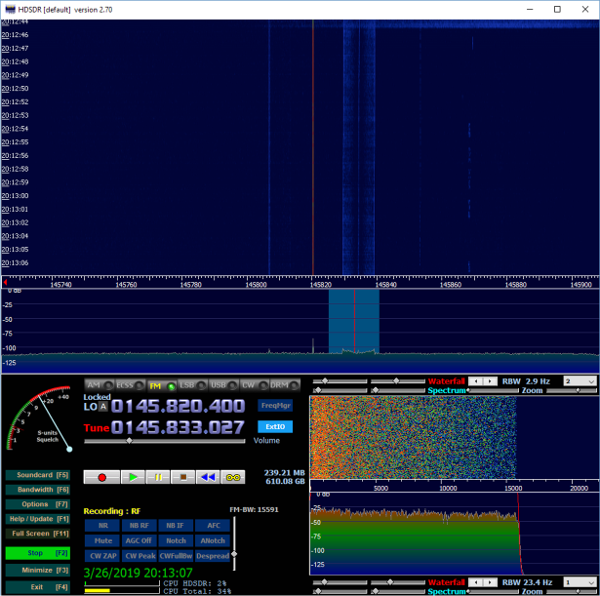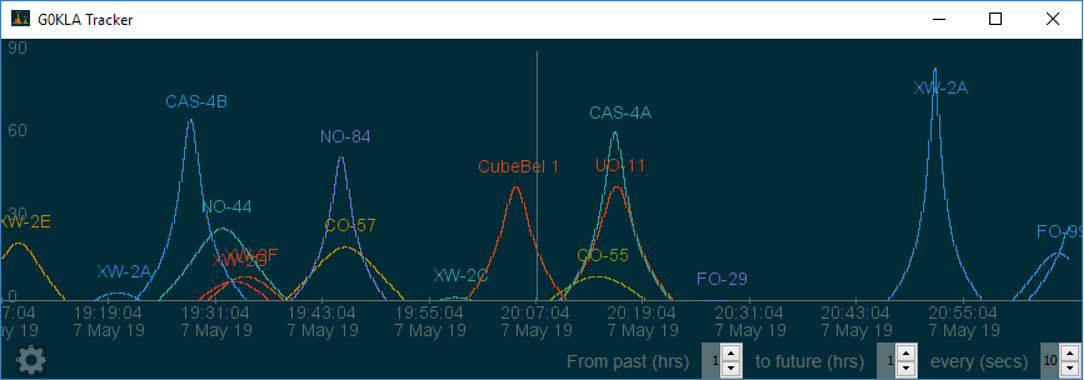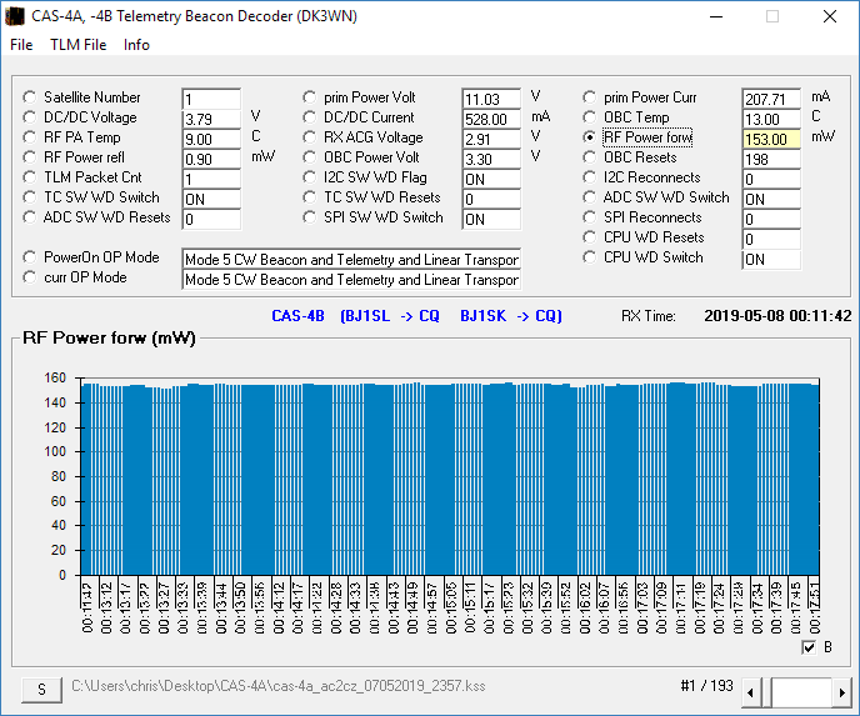
Downlink Frequency: 145.835MHz Callsign: BJ1SK Transmit Power: 20dBm Launched: 15 Jun 2017 from Jiuquan Satellite Launch Center, on the CZ-4B launch vehicle. Altitude: 524km Sun Synchronous Orbit Format: 4800bps GMSK AX25
CAS-4A is a micro satellite about 49cm by 50cm by 63cm. So quite large compared to other recent amateur spacecraft. The amateur radio subsystem is just a part of the larger spacecraft. The primary payload was an optical Camera with 1.98m resolution. The amateur transponders were turned on 18 Oct 2017.
The spacecraft rose from the West this evening, with the noise from Manhattan blocking most of the signal initially. It peaked at 21 degrees elevation and the signal seemed to be quite strong, standing out from the noise. It has a characteristic shape and was on the right frequency, give or take a kHz. You can see from my screenshot below that HDSR is tuned just slightly too low by SatPC32. But I was recording the pass, so I can try again when the pass is finished. For future passes I will tweak the nominal frequency in SatPC32 and see if it is more on frequency. It might be off because of thermal effects on the transmitter, or it might be permanently on slightly the wrong frequency. Something to investigate.

The telemetry is 4800bps GMSK and AX25 KISS format. With that said it is not clear with each spacecraft how the format should be decoded. My goto program for AX25 decode is the wonderful hs_soundmodem but I could not get any of the GMSK formats to decode. I saw online a screen shot showing the G3RUH 4800bps decoder working for this format, but that does not make sense to me. G3RUH is FSK. Maybe GMSK is too, but it is described as continuous phase FSK where the carrier changes take place at the crossing points. This keeps the phase changes linear and the signal narrow.
GMSK stands for Gaussian Minimal Shift Keying. The guassian part is the filter that is applied to the bit stream to reduce the bandwidth by shaping the bits. This seems to be the same approach I use with a Root raised cosine for FSK and PSK on the AMSAT Fox spacecraft. But it seems that the guassian filter introduces Intersymbol Interference (ISI) whereas the Root Raised Cosine avoids it. So it's not entirely clear why you would use GMSK for a telemetry channel. It is used in GSM for mobile phones and for spacecraft comms where there is a loud signal. But it might be difficult to decode from a small spacecraft with a weak signal. Certainly harder to decode than QPSK and definitely much harder than BPSK.
So my initial attempts to decode were a bust. Perhaps because I am using the wrong decoder but more likely because the signal was too weak. The 2m preamp is now repaired, but still sitting on the bench in the shack. It has been cold and rainy, so I am waiting for a better "spring" day to remount it. March in Brooklyn is really still winter...
After successfully decoding CAS-4B I tried CAS-4A again on its next pass. This was a fairly good one as you can see below, peaking at about 70 degrees.

While CAS-4B has decoded well, I had to tune manually because my Doppler offset was slightly wrong. For CAS-4A I went to SatPC-32 and clicked the CAT menu. This allows Doppler offset to be entered. I set HDSDR to tune via DDE from SatPC-32. I played with the offset in the first minute of the pass and settled on an offset of 1.4kHz. That offset kept the signal decode line right in the center of the signal throughout the whole pass. One question is why the signal is 1.4kHz off, but that can be investigated later. It might be my calibration.
With the signal centered decoding proceeded exactly as for CAS-4B. This time the data flooded in and I decoded 968 frames. Those frames became 193 telemetry records.

Interestingly the data floods in and then pauses even though the signal looks strong. It might be coincidence and I am getting periodic interference, but it looked like the spacecraft was only sending valid data sometimes. Something else to investigate perhaps.
Enter Comments Here:
Copyright 2001-2021 Chris Thompson
Send me an email